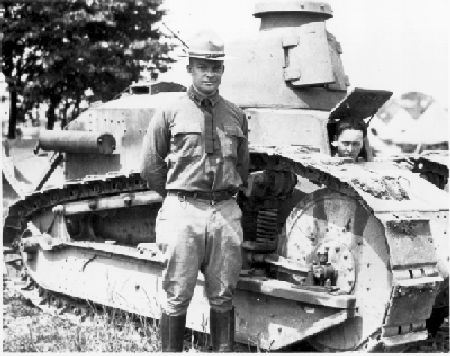|
Edited by Library Director Dan Holt with the assistance of Archivist Jim Leyerzapf, the volume includes a substantive introduction by the president's son, John S. D. Eisenhower. The project was greatly facilitated by Mr. Eisenhower, a well-known military historian.
Eisenhower includes five pre-World War II diaries and selected papers beginning with the earliest extant document written by Eisenhower a 1905 letter to a cousin in Topeka, Kansas and concludes with a rousing patriotic speech meant to be delivered to an Army Air Corps graduating class at Kelly Field, Texas, on December 12, 1941, the same day Eisenhower was ordered to the War Department by General George C. Marshall at the beginning of World War II.
The heart of the book is composed of the five diaries that cover the period from August 1929 to December 12, 1941. They include the Gruber-Eisenhower Diary (1929) that recorded a summer vacation that Ike, Mamie, and their friends took during his Paris service with the American Battle Monuments Commission; the Guayule Diary (1930), detailing an inspection trip to California, Mexico, and Texas to study rubber plant cultivation and processing for the mobilization planning division at the War Department; the Chief of Staff diary (1929-34), kept while Eisenhower worked with the Assistant Secretary of War and as a special assistant to Army Chief of Staff Douglas MacArthur; the Philippine Diary (1935-40), written during isenhower's service with the American Military Mission to the Philippines; and finally the Fort Lewis Diary (1940-41) kept during his short term of service at that post. These five diaries are being published in their entirety for the first time.
The original intention was to include only include the five diaries, but Holt and Layerzapf
expanded the volume to include a selection of personal, family, and military papers of substance. Also included are little-known speeches and articles that Eisenhower wrote for others when it could be determined that he authored those works. One example of Eisenhower ghost-writing is Douglas MacArthur's report on the U. S. Army's eviction of the famous Bonus Marchers from Washington in 1932.
The selected papers were compiled after an extensive search of the Library's pre-1942 holdings. Library volunteer Elinor Haas greatly assisted in this process by examining nearly 30,000 pages of the prewar papers and flagging and copying Eisenhower documents and collateral correspondencefor contextual notes. Leyerzapf examined the many remaining files in the Library collections and contacted twenty other archival repositories throughout the United States that held, or might have held, Eisenhower documents. Eisenhower Library Archivist Tom Branigar and NHPRC staff member Timothy Connelly also assisted in examining collections. Many others at the Eisenhower Library, at the National Archives and Records Administration, and at other historical institutions contributed significantly to this publication.
The papers were selected to demonstrate the breadth of Eisenhower's experiences, the scope of his early military training and tasks , and the range of writings and studies he conducted as a junior and field-grade officer- from personal to the professional. Of all the prewar Eisenhower documents (not including diaries), about one-half are included, many published for the first time. Copies of all Eisenhower prewar documents accumulated for this project, whether selected for publication or not, now reside in a reference file at the Eisenhower Library, providing a major resource file for researchers.
There is no question that the academic community will find this volume valuable. "It is fascinating to watch this making of a great man," notes Eisenhower biographer Stephen Ambrose of this new book, "to see his growth in the development of his self-confidence, his assumption of responsibility, his exercise of initiative." Presidential historian Robert H. Ferrell adds that "this extraordinary collection will keep historians busy for a long time. Here is the preparation . . . all the fascinating experiences that made possible the general of World War II and the president of the 1950s." Thanks to the Dwight Eisenhower Library, the Eisenhower family, and the Johns Hopkins University Press, this important chapter in the life of our thirty-fourth president will be available in hundreds of libraries and research institutions across the country for the first time.
|

